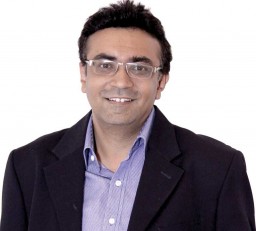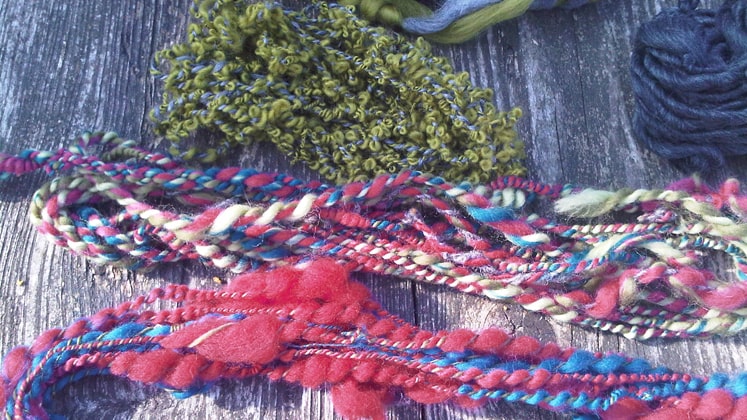Upscaling capabilities in yarn production, many spinning mills in India have started adapting to innovations and value additions, capitalising on new opportunities in differential yarns rather than focusing on same traditional ‘commodity’ yarn market. Moving up the value chain will help not only in adding profits but also reduce bottlenecks in competition. The big players like Vardhman, RSWM, Winsome Textiles, Trident Group, Nahar, Rajvir Industries to mention a few prominent ones, are now increasing the share of value added yarns in their total production capacity as international designers and forecasters are laying more emphasis on PD at yarn stage rather than value through surface treatment. Apparel Online talks to several leading yarn companies to know their direction in value added yarns…
R&D is critical to the development of specialized yarns which differ according to their specific properties and end-uses. Value added yarn is any type of yarn which has something extra than the basic single count yarn like slub yarn, double yarn, compact yarn, dyed yarn and so on. Technological advancement plays a major role in supporting R&D, like slub is created through technology and within slub, if more advanced technology is applied then 3 jet colour advancement like ink-jet slub; or air jet spun yarns are made. Vortex spinning is another technology for value added yarns. Another set of developments come at the fibre stage, when new fibres are used like bamboo, sea shell fibres, banana fibres, etc. The third approach to developments is blending the different fibres, changing the ratios, changing the substrates in terms of cottons or micro modal with some Pima cotton for new combinations and unique blends.

Industry experts feel that India lacks in innovations vis-à-vis China which is much ahead in value added yarn production, as the Indian textile companies prefer stable business as compared to taking risks. “India is still very much a commodity yarn supplier, but there are companies like Vardhman, Nahar, Trident and the likes who are doing work on value added yarns,” admits Sanjay K Jain, Managing Director, TT Ltd. He further adds, “Demand for value added yarns has been steadily growing, as designers are increasing in this arena – they look to create some difference in feel, functionality and looks and hence rising tend to explore usage of such yarns. Another reason for increase in R&D is the machinery manufacturers who are continuously working on new developments and then selling the same to the market,” opines Sanjay.
Vardhman Textiles, one of the biggest cotton yarn producers in India is now repositioning itself as a value added yarn producer. “Over the last 3-4 years we have repositioned our business model, especially for the domestic market, shifting our production capacities from fundamental yarns to value added yarns. Today our sales of value added yarns accounts for close to 50% of total sales, while earlier it was ranging between 25-30%. To meet this demand, we have increased production of mélanges from 18-20 tonnes a day, two years ago to 30 tonnes a day, converting our capacities from fundamental yarns to the value added yarns gradually. The export segment is however more volume based, so it is basically greige yarns,” shares Vijay Puniyani, Sr. Vice President (Marketing), Vardhman Textiles Ltd.

For TT Ltd., the share of value added yarns is still very small at around 10%, however going forward the company expects growth rates to be in the range of 20%. As of now the company is producing various certification based yarns like BCI, Organic and Fair Trade yarn along with a bit of compact yarn. “We are conscious of the fact that we need to provide more options to the buyer, not to forget that value added yarn is a source of higher margins. We have been slowly developing this area since the last 5 years,” informs Sanjay who is looking at capacity expansion by 2016-17 at his Gujarat spinning unit.
Many specialized yarns are gaining importance in recent times over conventional yarns because of their physical or chemical properties. Fully degradable tencel yarn manufactured from wood pulp, is soft as silk, strong as polyester, cool as linen, warm as wool and as absorbent as cotton. Not only is tencel environment-friendly, but has also been designed to be a lovely and wearable fibre. Modal is a semi synthetic cellulose and it is used alone or blended with other fibres. It offers soft hand-feel, good drapability and comfort while wearing. It has good moisture regain and air permeability which is often considered better than cotton fabric; hence it is used in household items such as pyjamas, towels, bathrobes, undergarments and bed sheets. It is a good material for exercise clothing and health suit, which can serve to benefit physiology circulation and health of the body.
One of the most popular categories in value added yarns is the one made with natural fibre. Recently, Tenbro, an eco-friendly fibre from bamboo manufacturer from China, has inked a partnership with the Tata Group for supplying Tenbro fibres, which are made from bamboo and are naturally anti-bacterial having moisture absorption properties, good for human skin. Though there are other natural products made from soyabean, corn, milk, banana and even pineapple, but they are expensive and not commercially viable. “We are doing products that are commercially accepted and put minimum stress on nature. We cut bamboo trees, as they grow fast and do not affect the environment as much when compared to viscose, as for viscose it’s necessary to cut trees that take nearly 20 years to grow back to that size,” elaborates Sachin Doshi, Director, Tenbro who has very impressive list of clients such as Trident, RSWM, Welspun and Pallava, to mention a few.
Being the pioneer in cotton and cotton blended yarns, Vardhman claims having largest capacity in India of 100% cotton mélange (almost 90% of total market), lycra blends and slub yarns as of today. “Our strategy is to strengthen our offerings in value added yarns through innovative use of fibre, blends and technology, for example mélange is already a value added yarn but we try to add slubs in it, or produce compact mélange, Pima mélange and many other such variations for uniqueness. This constant R&D has always kept us ahead, giving us good market share as well as profitability,” adds Vijay.
Secunderabad based Rajvir Industries Ltd. (formerly a part of Suryalakshmi Cotton Mills Ltd.) is another big player in value added yarns. With a humble beginning of a mere 6,000 spindles in 1962, today the company has 1,20,000-spindle facility. The company has a huge library of over 6,000 mélange/heather shades and a range that encompasses everything – 100% cotton/organic/fair-trade, combed yarns, blended yarns (polyester, viscose, modal, spun silk and flame retardant) mélange/ heather yarns, modal yarns, synthetic yarns and cheese dyed yarns. According to UK Agarwal, Managing Director, Rajvir Industries, they are increasing their mélange manufacturing capacities by 40%. Believing in constant capacity expansion, Agarwal says, “We are also doubling our dyeing capacities and TFO capacities is underway. The synthetic division expansion to the tune of 30% is nearing completion. Our main focus remains towards increasing value added production.” The company is also about to embark on a new shirt weight project with 48 looms and supporting finishing equipment to produce around half a million metres of yarn dyed checks/stripes.









